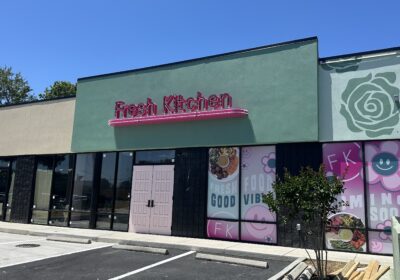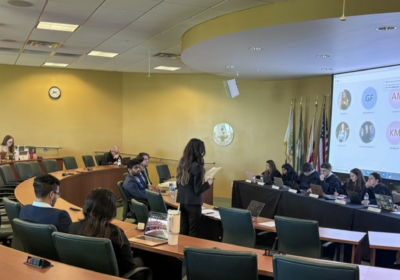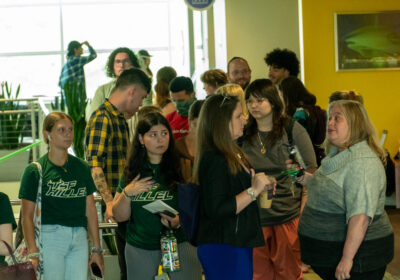Engineering professor wins US Professor of the Year award
Autar Kaw, a mechanical engineering professor, has a slightly different philosophy of teaching.
Instead of assigning a set of problems from a textbook, the professor, who teaches courses in computational methods, programming concepts for mechanical engineering and introduction composite materials, asked his students to re-write the lyrics to the nursery rhyme One, Two, Buckle My Shoe replacing every other line with engineering lyrics.
I try to remove the stereotypes from the students themselves, he said. They have to go beyond the stereotypes that they have to do math well, or science well. Thats why I assign them to write a poem or an essay. … Some students said it was the hardest assignment of the semester.
But Kaws philosophy, which he has developed over his 25 years of teaching at USF, has earned him national recognition.
Today he, USF President Judy Genshaft and Provost Ralph Wilcox will be greeted by a congressional reception in Washington, D.C., as he is presented with the U.S. Professor of the Year Award, sponsored by the Carnegie Foundation for the Advancement of Teaching and the Council for Advancement and Support of Education.
Wilcox said this is the first time a USF professor has been given this award, and to his knowledge the first time a Florida professor has. Kaw was nominated by the chair of his department.
This is just awesome, Genshaft said to the Faculty Senate on Wednesday evening.
As a former judge for the award, Kaw said he had been extremely impressed by the caliber of nominees in previous years and thought it was unbelievable when he found out he was selected in September.
Though Kaws father was a high school teacher who taught English and math, and he often observed on days his school was closed but his fathers was open, he didnt know he wanted to teach until he moved to the U.S. from India in 1982 and started graduate school.
His teaching philosophy is not at all what it was when he first started teaching, he said with a chuckle.
When I first started teaching, it was more about providing content, and that was my main goal, he said. I was reasonably successful in doing it, but I didnt look at the social aspect as much, though I would talk to the students and advise them, but not in the full sense.
Now he said, he sees his role as a hybrid model between the the sage on the stage (in which) youre simply transmitting information and the guide on the side (in which) youre helping the students learn on their own.
Students are novices to a subject matter when they start, and in the case of novices you do have to instruct them in a guided fashion and then you can take the supports out little by little, and then in the end theyre experts and able to solve problems on their own, he said. Its almost like not giving directions to a person to go from one place to another. Surely, along the way they might discover paths they may not have seen before or maybe even see some flowers, but theres a possibility that they will get lost. If youre showing
a person around town, in the beginning you might tell them, Hey, go from here to here and show them the landmarks, and as they get comfortable with the city they can experiment on their own and theyll know theyre not going to get lost or mugged because theyre not on the beaten path.
The key to good teaching, he said, lies in strong student-teacher connections.
And that, he said, is what keeps him going.
Half of his Facebook friends, he said, are former students, and when he posted a photo of himself that he had to send in as part of his recognition as U.S. professor of the year, a student from six or seven years ago commented on his post, rattling off the formulas on the whiteboard behind Kaw in the photo.
Seriously, I just realized I couldnt name the professor for several courses I took at USF, but from this one picture Im pretty sure the lesson being taught has something to do with shear coupling (in angle laminae?), the student commented. And I have not done any work with composites since leaving that class. You obviously did your job well Dr. Kaw.
Kaw said its the simple things that keep him energized to teach.
The biggest thing that encourages me all the time is to see students come back and see that they have done not only well professionally but also personally, he said. I hope that Ive had some small part in influencing their lives. I know they get 40 different teachers for the 40 or 45 different courses they take, but I get to see them for a small part of that time.
EDITOR’S NOTE: An earlier version of this story stated that Kaw taught for 35 years. That is incorrect. He has taught for 25 years at USF. The story has been updated to reflect the correct number.






